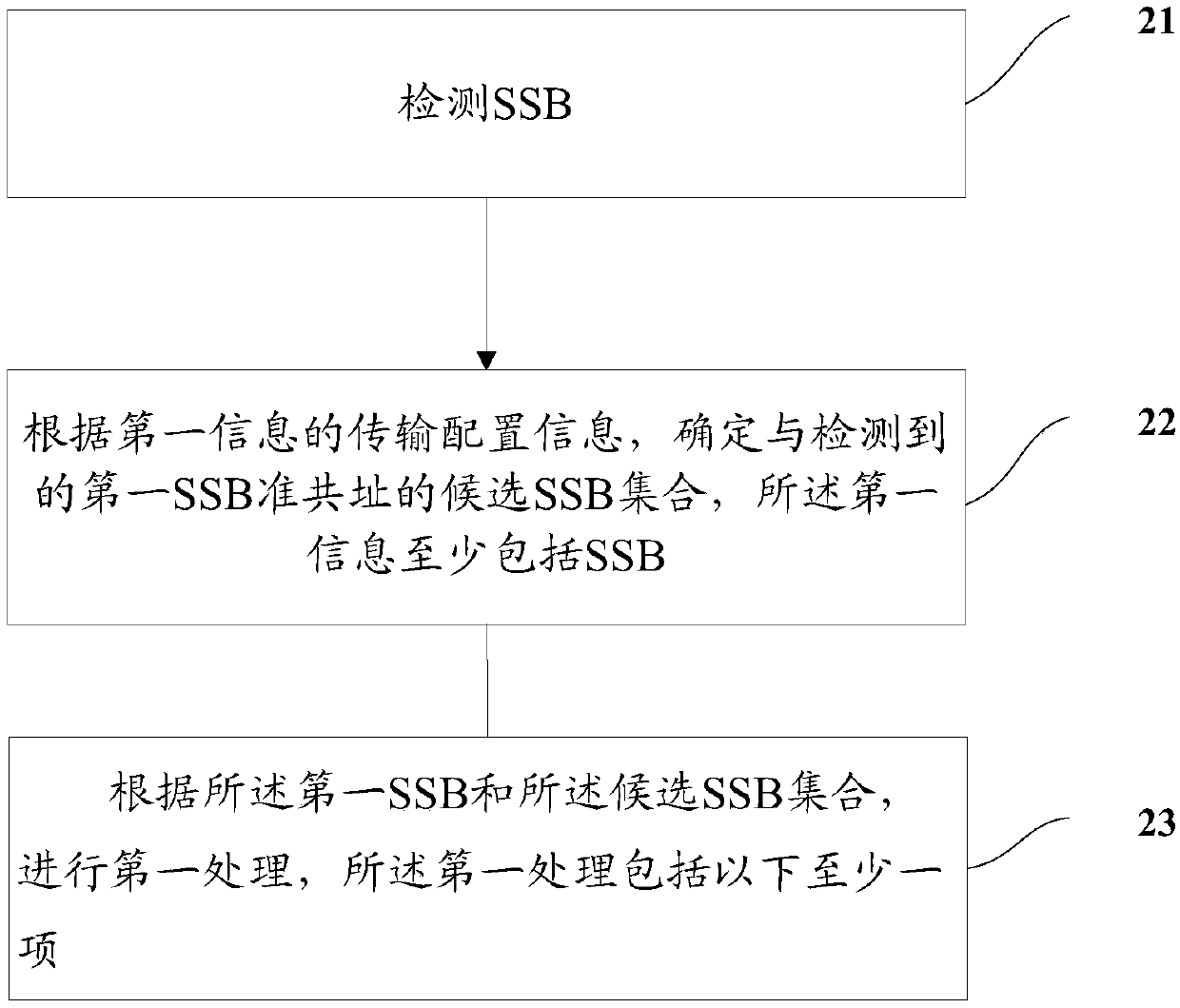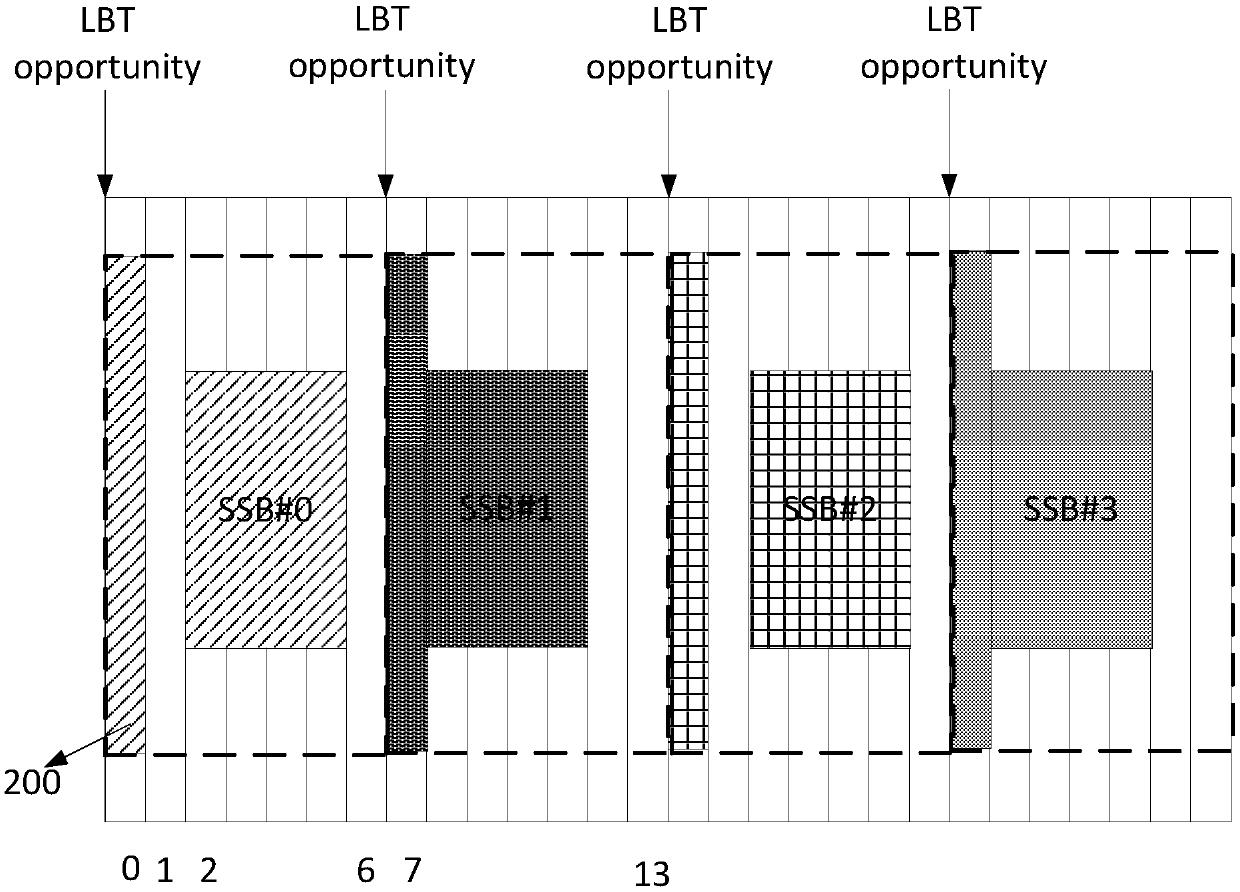Information receiving method, information sending method, terminal and network side equipment
A receiving method and terminal technology, applied in the field of sending method, information receiving method, terminal and network side equipment, to achieve the effect of flexible search space configuration and search space
- Summary
- Abstract
- Description
- Claims
- Application Information
AI Technical Summary
Problems solved by technology
Method used
Image
Examples
Embodiment 1
[0165] Assuming that the subcarrier spacing of the unlicensed communication system is 30KHz, an example of the transmission configuration information of the above-mentioned first information is shown in Table 2:
[0166] Table 2
[0167]
[0168] The First symbol index in the above Table 2 is the position (information 1) of the first search space of the physical control channel associated with the SSB in the same time slot in the above embodiment.
[0169] The Number of search space sets per slot is the number n of search spaces of the physical control channel in one time slot in the above embodiment (information 2).
[0170] The DRS window (DRS window) is the candidate transmission time window in the above embodiment. The DRS window period is the week T of the candidate transmission time window in the above embodiment (information 3). The DRS window duration is the length L of the candidate transmission time window in the above embodiment (information 4).
[0171] The Q...
Embodiment 2
[0181] Still take the configuration information in Table 2 as an example.
[0182] Please refer to Figure 7 , when the network-side device determines to send the first information with the transmission configuration information whose index is 1, the network-side device performs channel idle monitoring within the DRS window (3ms) at a monitoring granularity of 0.5 slots, and there are 12 times (0.5 slots in total) 0.25ms, 3ms, a total of 12 time slots) to try to send LBT opportunities.
[0183] Figure 7 In the illustrated embodiment, the network side device detects that the channel is idle in the first slot (that is, slot#0) of a DRS window, and the network side device detects that the channel is idle in the first to third slots (that is, slot#0, slot#1, slot2#) The first information (the SSB, the Type 0 PDCCH associated with the SSB, and the system information of the Type 0 PDCCH scheduling) is sent on the SSB. The network side device detects that the channel is idle in t...
Embodiment 3
[0188] Please refer to Figure 8 , this embodiment and Figure 6 The difference of the illustrated embodiment is that the network side device is configured with: information 6, that is, the number and / or position of SSBs sent in one time slot. Figure 8 In the described embodiment, one SSB is sent in one time slot.
[0189] Embodiment 4 of the present invention
[0190] Please refer to Figure 9 , assuming that the network side device sends the first information according to the configuration information whose index is 0, the terminal 1 (UE1) performs SSB monitoring on the running carrier, and detects SSB#2 and SSB#3, according to the transmission configuration carried by SSB2 and SSB#3 Information, get the transmission configuration information whose index is 0. And according to the monitoring time of SSB#2, the start time of the DRS window can be obtained, combined with the period and length of the DRS window, the absolute time window of the DRS can be obtained, namely F...
PUM
 Login to View More
Login to View More Abstract
Description
Claims
Application Information
 Login to View More
Login to View More - R&D
- Intellectual Property
- Life Sciences
- Materials
- Tech Scout
- Unparalleled Data Quality
- Higher Quality Content
- 60% Fewer Hallucinations
Browse by: Latest US Patents, China's latest patents, Technical Efficacy Thesaurus, Application Domain, Technology Topic, Popular Technical Reports.
© 2025 PatSnap. All rights reserved.Legal|Privacy policy|Modern Slavery Act Transparency Statement|Sitemap|About US| Contact US: help@patsnap.com



